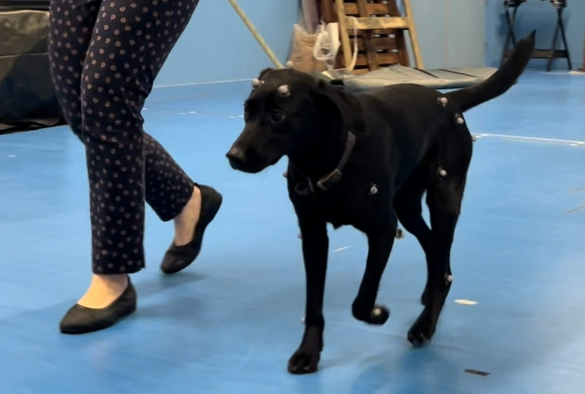University of Liverpool Launches Innovative Dog Walk Project: emBARKing on Canine Well-being
Researchers from the University of Liverpool and the Natural History Museum are appealing for dog owners to put their pooch forward for a new study. Investigators want to greater understand the intricacies of canine anatomy and movement, with the goal of enhancing the health and welfare of ‘man’s best friend’.
The new initiative will see dogs invited to the University’s ‘Gait Lab’ to have their movement and growth tracked and scanned using state of the art technology. Here scientists will produce 3D animations of a dog’s movement, providing unparalleled and never before quantified insight into the mechanics of canine mobility.
The domestic dog, unlike any other species, exhibits an extraordinary range of body shapes across breeds, shaped by centuries of selective breeding. From the elongated Dachshunds to the towering Great Danes and the compact Pugs, these variations in body shape are not seen anywhere else in the animal kingdom within a single species.
Selective breeding practices, dating back to Victorian times, have aimed to alter the functional anatomy of dogs for various purposes, such as work, agility, or achieving certain visual aesthetics. These practices have led to unique breed characteristics but also raised questions about how they may affect the healthy function of bone, joints and muscles.
Professor Eithne Comerford, Professor in Small Animal Surgery, University of Liverpool said: “Selective breeding is a practice that has existed for more than 100 years. This project will help us understand its impact on canine anatomy and musculoskeletal health. We will analyse how the anatomy and movement of a dog’s skeleton changes during its growth, particularly in different breeds. By tracking these growth trajectories, we hope to shed light on potential links between specific breeding and growth patterns and the development of musculoskeletal health issues in dogs as a result.”
Data will be collected throughout this long-term project which will ultimately be integrated into canine welfare technology which the public can access to asses the health of their own dog.
Dr Karl Bates, Institute of Life Course and Medical Sciences, University of Liverpool said: “We will integrate the data we collect on anatomy and movement, combining it with biomechanical computer models, to evaluate the demands placed on the musculoskeletal system of dogs. Our analysis will identify any mechanically unfavourable conditions that exist in particular breeds with a high prevalence of musculoskeletal health issues.
“Our long-term ambitions for the study is for this valuable data to be integrated into easily accessible guides and tools that pet owners and veterinary professionals could use to better understand the musculoskeletal health of their pets and patients.”
Significantly findings from the project will be used by The UK Kennel Club to inform future breeding policies and disseminate scientific knowledge to breed societies.
The new initiative is funded by the Biotechnology and Biological Sciences Research Council (BBSRC), The Royal Society, and The Kennel Club. It is led by Dr Karl Bates and Professor Eithne Comerford from the University’s Institute of Life Course and Medical Sciences.
What does the study involve?
Dogs will be asked to perform walking trials in the University’s purpose-built biomechanics lab – the ‘Gait Lab’. Here scientists will measure the motion of their joints using skin markers, sensors, cameras and x-ray methods.
Who can take part?
Researchers are looking to recruit young, healthy dogs from the following breeds: German Shepherds, Labradors, Cocker Spaniels, Springer Spaniels, Dachshunds, West Highland White Terriers, French Bulldogs, Border Collies, Beagles and Greyhounds.
They need to be at least 1 year old but younger than 8 years old, with no signs of health problems that affect their movement. Dogs must currently be going for walks of between 30-90 minutes a day and should be a good healthy weight.

